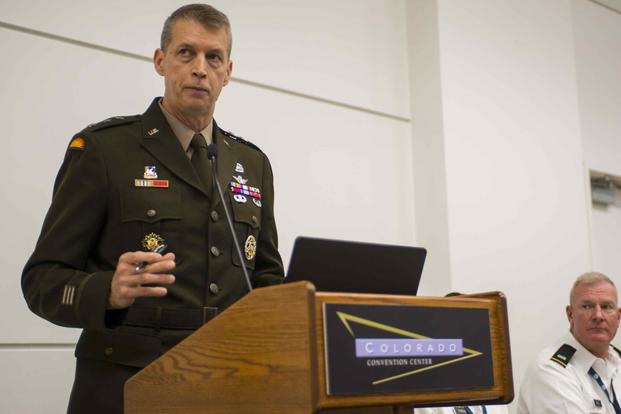After an unprecedented year of back-to-back domestic missions and combat deployments, the National Guard's top general expects the Pentagon to lean even more heavily on the Guard moving forward.
"Given the uncertain future and budget priorities, we expect the Department of Defense to rely on the National Guard more, not less," General Daniel Hokanson, chief of the National Guard Bureau said in the force's annual posture statement this month. "Therefore, we must be ready to execute our three core missions; fighting America's wars, securing the homeland, and building enduring partnerships."
Read Next: Here's How Much the Pentagon Has Spent So Far to Treat Transgender Troops
Since March 2020, many elements of the National Guard have been tasked with a large list of domestic missions including pandemic relief, responding to numerous protests and natural disasters, and securing the Capitol after the pro-Trump insurrection on Jan. 6.
However, those missions are winding down. According to the Guard's posture statement, which gives an overview on the force's goals next year, going back to training for war will be a top priority.
The Guard has continued to juggle missions abroad amid its domestic deployments, all while maintaining civilian careers and not having access to all the resources given to their active-duty counterparts, such as child care.
Currently, there are more than 20,000 Guard troops deployed in support of missions in the Middle East, Africa and Europe, according to the National Guard Bureau.
The Guard is also sending thousands of soldiers to three-week rotations at combat training centers, or CTCs, which are used to evaluate a brigade's ability to perform in combat. CTCs are often the last stop for a brigade before it gets an overseas mission.
Two National Guard brigades are training at the National Training Center in Fort Irwin, Calif. this year: Mississippi Army Guard's 155th Armored Brigade Combat Team which is there right now, and Oklahoma's 45th Infantry Brigade Combat Team in July.
Three brigades are training at the Joint Readiness Center in Fort Polk, La. this year: Ohio's 37th Infantry Brigade Combat Team in July, and Indiana's Security Force Assistance Brigade in August.
Beyond the traditional warfighting domains on land, the Guard is aggressively posturing itself in space. Key leaders, including Hokanson, have advocated to Congress the need for a Space National Guard.
"The National Guard retains decades of depth and expertise in space operations," Gen. John Raymond, the chief of the Space Force said in a statement. "Guardsmen are masters of their trade and many work directly with the space industry. Every day, guardsmen conduct missile warning, satellite command and control [and] analyze space intelligence and conduct space electronic warfare operations on behalf of combatant commanders around the globe."
Currently, the Guard provides 60% of the Space Force's offensive electronic warfare capability, according to the Guard's posture statement.
The National Guard has 14 space units across seven states and one territory: Alaska, California, Colorado, Florida, Hawaii, New York, Ohio and Guam.
The previous National Defense Authorization Act instructed the Defense Department to brief lawmakers on the viability and practicality of a Space Force Reserve or Guard element.
-- Steve Beynon can be reached at Steve.Beynon@military.com. Follow him on Twitter @StevenBeynon.
Related: Space Guard 'Among My Most Pressing Concerns,' National Guard Chief Tells Congress














